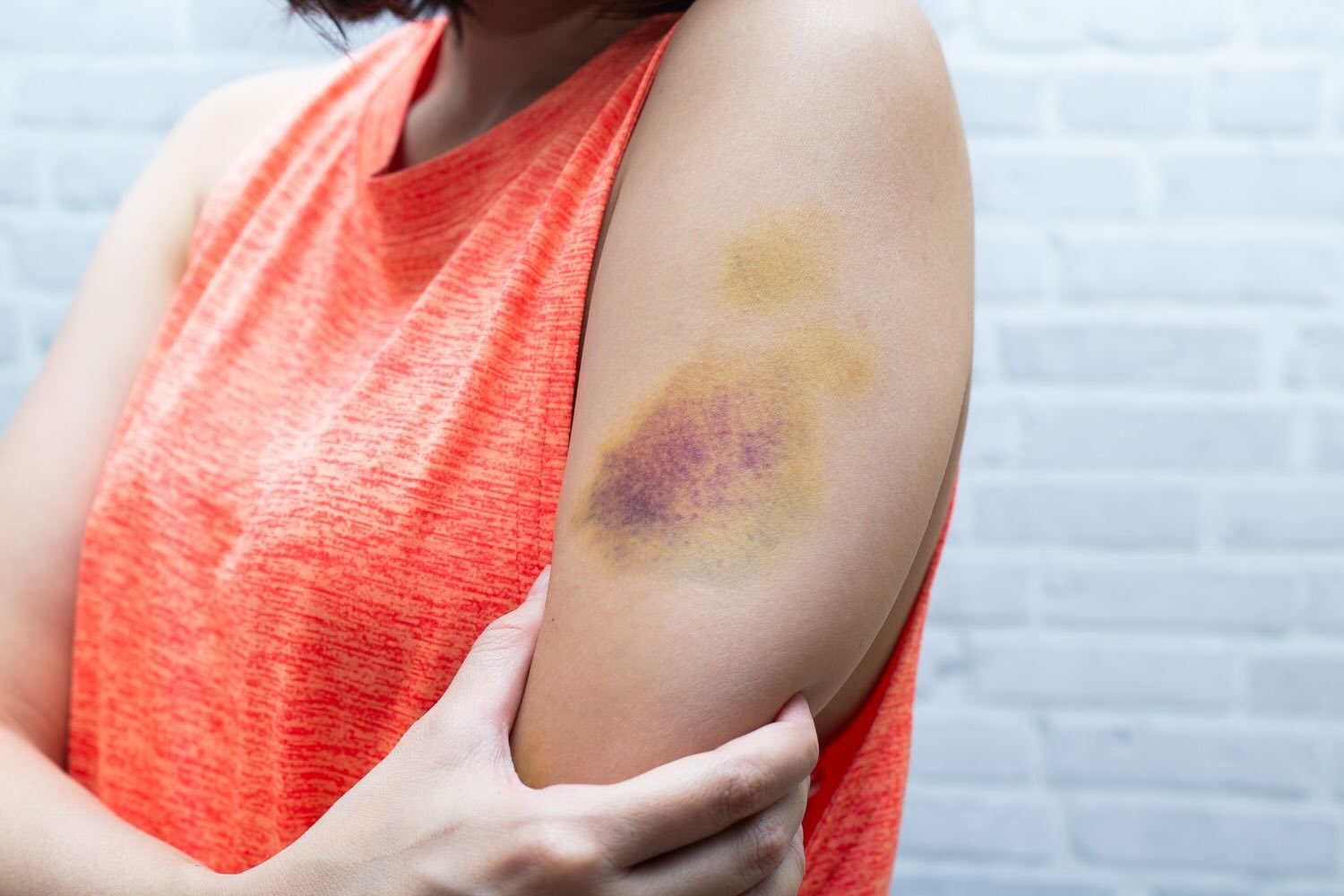
What is ecchymosis? Ecchymosis is a medical term for a type of bruise. It happens when blood leaks from broken capillaries into the surrounding tissue, causing a purple, blue, or black mark on the skin. Unlike a regular bruise, ecchymosis can be larger and may not always result from an injury. Conditions like blood disorders, certain medications, or even aging can make someone more prone to ecchymosis. Understanding the causes and symptoms can help in identifying when a bruise might be more than just a minor bump. Let's dive into 25 intriguing facts about ecchymosis that will help you understand this condition better.
What is Ecchymosis?
Ecchymosis might sound like a complicated medical term, but it's something most people have experienced. It's essentially a fancy word for a bruise. When blood vessels break under the skin, blood leaks out, causing that familiar black-and-blue mark. Let's dive into some fascinating facts about ecchymosis.
-
Origin of the Term: The word "ecchymosis" comes from the Greek word "ekchymōsis," which means "to pour out." This makes sense since the condition involves blood pouring out of vessels into surrounding tissues.
-
Size Matters: Ecchymosis is typically larger than 1 centimeter in diameter. Smaller spots are usually referred to as petechiae or purpura.
-
Color Changes: A bruise changes color as it heals. It starts red, turns blue or purple, then green, yellow, and finally brown before disappearing.
-
Healing Time: Most bruises heal within two weeks. The body gradually reabsorbs the blood, causing the color changes.
-
Common Causes: Bruises often result from trauma, like bumping into something. However, they can also be caused by medical conditions, medications, or aging.
Medical Conditions and Ecchymosis
Certain health issues can make someone more prone to bruising. Understanding these conditions can help in managing and preventing ecchymosis.
-
Blood Disorders: Conditions like hemophilia or leukemia can cause frequent bruising due to problems with blood clotting.
-
Vitamin Deficiency: Lack of vitamins C and K can lead to easy bruising. These vitamins are crucial for blood vessel health and clotting.
-
Liver Disease: The liver produces proteins necessary for blood clotting. Liver diseases can impair this function, leading to more bruises.
-
Medications: Blood thinners, aspirin, and corticosteroids can increase the risk of bruising by affecting blood clotting or weakening blood vessels.
-
Aging: As people age, their skin becomes thinner and blood vessels more fragile, making bruises more common.
Diagnosing Ecchymosis
Doctors use various methods to diagnose the cause of ecchymosis. This helps in providing the right treatment and preventing further bruising.
-
Physical Examination: A doctor will examine the bruise's size, color, and location to determine its cause.
-
Medical History: Knowing a patient's medical history, including any medications or conditions, helps in diagnosing the cause of bruising.
-
Blood Tests: Tests like a complete blood count (CBC) can reveal underlying issues like blood disorders or vitamin deficiencies.
-
Imaging Tests: In some cases, imaging tests like X-rays or MRIs might be needed to check for internal injuries causing the bruising.
-
Biopsy: Rarely, a skin biopsy might be performed to rule out other conditions that cause similar symptoms.
Treating and Preventing Ecchymosis
While most bruises heal on their own, some treatments can speed up the process and reduce discomfort. Preventive measures can also help reduce the risk of bruising.
-
Cold Compress: Applying a cold compress immediately after an injury can reduce blood flow to the area, minimizing the bruise.
-
Elevation: Keeping the bruised area elevated can reduce swelling and help the bruise heal faster.
-
Pain Relief: Over-the-counter pain relievers like acetaminophen can help manage pain. Avoid aspirin as it can worsen bruising.
-
Arnica: Some people use arnica gel or cream, a natural remedy believed to reduce bruising and inflammation.
-
Protective Gear: Wearing protective gear during sports or other activities can help prevent injuries that cause bruising.
Interesting Facts About Ecchymosis
Beyond the medical aspects, there are some intriguing tidbits about bruises that might surprise you.
-
Bruise Tattoos: Some artists create temporary tattoos that look like bruises for special effects in movies or performances.
-
Historical Remedies: Ancient Egyptians used raw meat to treat bruises, believing it would draw out the blood.
-
Animal Bruises: Animals can get bruises too. Horses, for example, often bruise from kicks or falls.
-
Psychological Impact: For some, frequent bruising can cause anxiety or embarrassment, especially if they don't know the cause.
-
Cultural Beliefs: In some cultures, bruises are seen as a sign of good luck or a mark of bravery, especially in children.
Final Thoughts on Ecchymosis
Understanding ecchymosis helps you better manage those pesky bruises. Knowing that ecchymosis results from blood leaking into tissues after an injury can make it less alarming. Bruises change color as they heal, shifting from red to purple, then yellow or green. This color change is normal and part of the healing process. Cold compresses can reduce swelling and pain in the first 48 hours, while warm compresses help after that. If a bruise doesn't improve or is accompanied by other symptoms, consult a doctor. Healthy habits like eating a balanced diet and protecting your skin can prevent severe bruising. Remember, while ecchymosis is usually harmless, staying informed ensures you handle it effectively. Stay safe, and take care of your body!
Was this page helpful?
Our commitment to delivering trustworthy and engaging content is at the heart of what we do. Each fact on our site is contributed by real users like you, bringing a wealth of diverse insights and information. To ensure the highest standards of accuracy and reliability, our dedicated editors meticulously review each submission. This process guarantees that the facts we share are not only fascinating but also credible. Trust in our commitment to quality and authenticity as you explore and learn with us.
